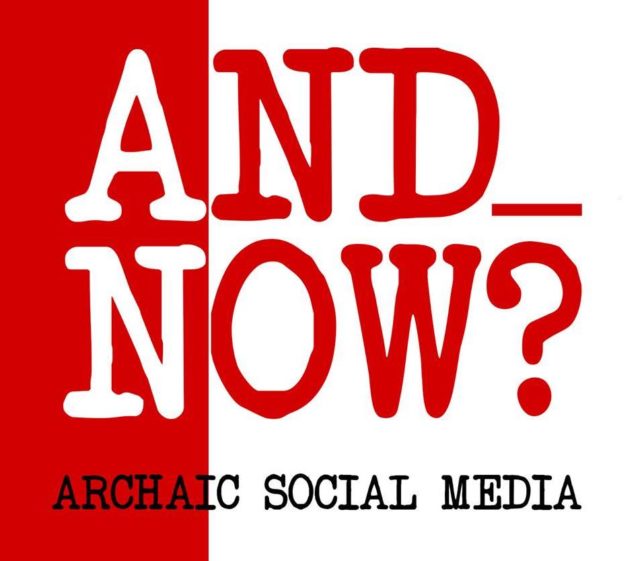 Arts Wire: Time in a Carpet Bag
Arts Wire: Time in a Carpet Bag
Karen Beech

Let’s suppose that the universe is a carpet bag. If you’re not already thinking Mary Poppins, it might help. Our carpet bag technically is a limited space but it possesses unlimited potential. Now let’s suppose that Mary has become an avid knitter and has, at some point, started work on a sweater. A rather frumpy sweater that doesn’t have any shape and whose neck hole is a little too small after the first time you washed it (in warm water because you didn’t know any better) and it doesn’t have any pockets. Not that any of these things matter. It’s just to give a sense of the general sweater-ness of the situation being created here.
We’re talking about the universe, in a carpet bag, in order to talk about time (which is our ultimate goal), since the two inevitably go together in our contemporary concept of reality. The pertinent point is that there is a decent amount of yarn in this bag, enough for several attempted knitting projects that never made it to the second line of the instructions because the project just seemed too daunting. The yarn is a crucial component of this discussion; the string is serving as our physical construction of time.
This is less unusual than it may first appear, for we, as a modern society (and indeed for quite some time), have defined time as linear, progressing one minute after another like little soldiers, marching one behind another towards the future, the moving line an arrow through space. Forward the minutes march, onward, onward, onward.
Our string is exactly that—directional, singular—and yet gives us something to hold on to.
The yarn meanders its way around the carpet bag, twisting over itself, looping back, knotting, tangling, and, on rare occasion, existing in untouched skeins. This string, filling the carpet bag of space, is our perception of time (or real time, depending on how you think of these things). The entire purpose of this trip down the Mary-Poppins’-handbag-hole (deeply related to the rabbit hole of Alice in Wonderland) is to have a sense of time overlapping. We are hypothetically folding time, something that we do relatively frequently. We can, in fact, draw our present moment towards a past moment and touch the points together; one point on the string of time crossing another somewhere in the carpet bag. In order to fold time, one must adhere to a linear progression of time—one must be able to pull two points on a line together, leaving a loop of unwanted (or rather unexperienced) time that hangs useless in between like a bit of unwanted string.
We can, in fact, draw our present moment towards a past moment and touch the points together.
So let’s review our rather unconventional and impractical concept of time, one that has more in common with a toaster oven than a scientific theory. In summary, we have ourselves a carpet bag that represents the universe and a massive quantity of string that represents time. Now, because there are multiple knitting projects that have been riding around in the carpet bag for several skeins of yarn (sticking with the constructed metaphor here), the string has become a bit of a mess. A rather large, colorful, disorganized, tangled mess. For the most part this isn’t a problem (those knitting projects were not being worked on anyway) until we decide that we are going to work on making a sweater.
It is important to note that I am not the one who started knitting the sweater in question. I just happened to rummage around in the carpet bag and get my hand stuck in a project that was already well underway; Anne Focke, and many others, had already been knitting away. Anne & Friends had been knitting a string of time into an Arts Wire sweater long before I arrived. For the fun of it, let’s go ahead and say they were using red string (Anne loves red), and that the present moment is a white string, able to be dyed any color when we have a better sense of what in the world we’re doing.
Anne & Friends had been knitting a string of time into an Arts Wire sweater long before I arrived.
The Arts Wire sweater had continued to ride around in the carpet bag, becoming wrapped up and looped through other strings and other projects, until it found itself subjected to the present moment. Organic confusion and linear folding become one in this conception. Two strings have overlapped, two points in time have come together and, to my great pleasure, since I rather like the Arts Wire sweater, the red and white yarn have been tied together through the Arts Wire files.
What’s the point, you may ask? It’s this: two different points of time, one being our present lived experience (Miss White String), and one somewhere between 1989 and 1995 (Miss Red String, aka Arts Wire), have been stitched together in the interest of a useful object (a sweater, podcast, conversation, personal exploration…).
What is being done now can be understood perhaps as a continuation of the original sweater but is not necessarily in keeping with the original pattern; it is a variation, a shift in the fabric of the sweater itself. The change in temporal moments is clear, with red giving way to white, and yet there is a sense of continuity. A deliberate seeking out of the stitches and an adding on that is intended to highlight, draw-out, and utilize the work that has come before.
The Arts Wire of the past is being knit into the present moment.

Karen Beech received her undergraduate degree in Art History in June 2017 and was a speaker at the graduation celebration for the School of Art + Art History + Design. With Jessica Capó she worked with me for the entire 2016-2017 academic year. Among other things, she assumed the role of our “on-air” host for the AND_NOW? podcast series.
![]()
1 Comment